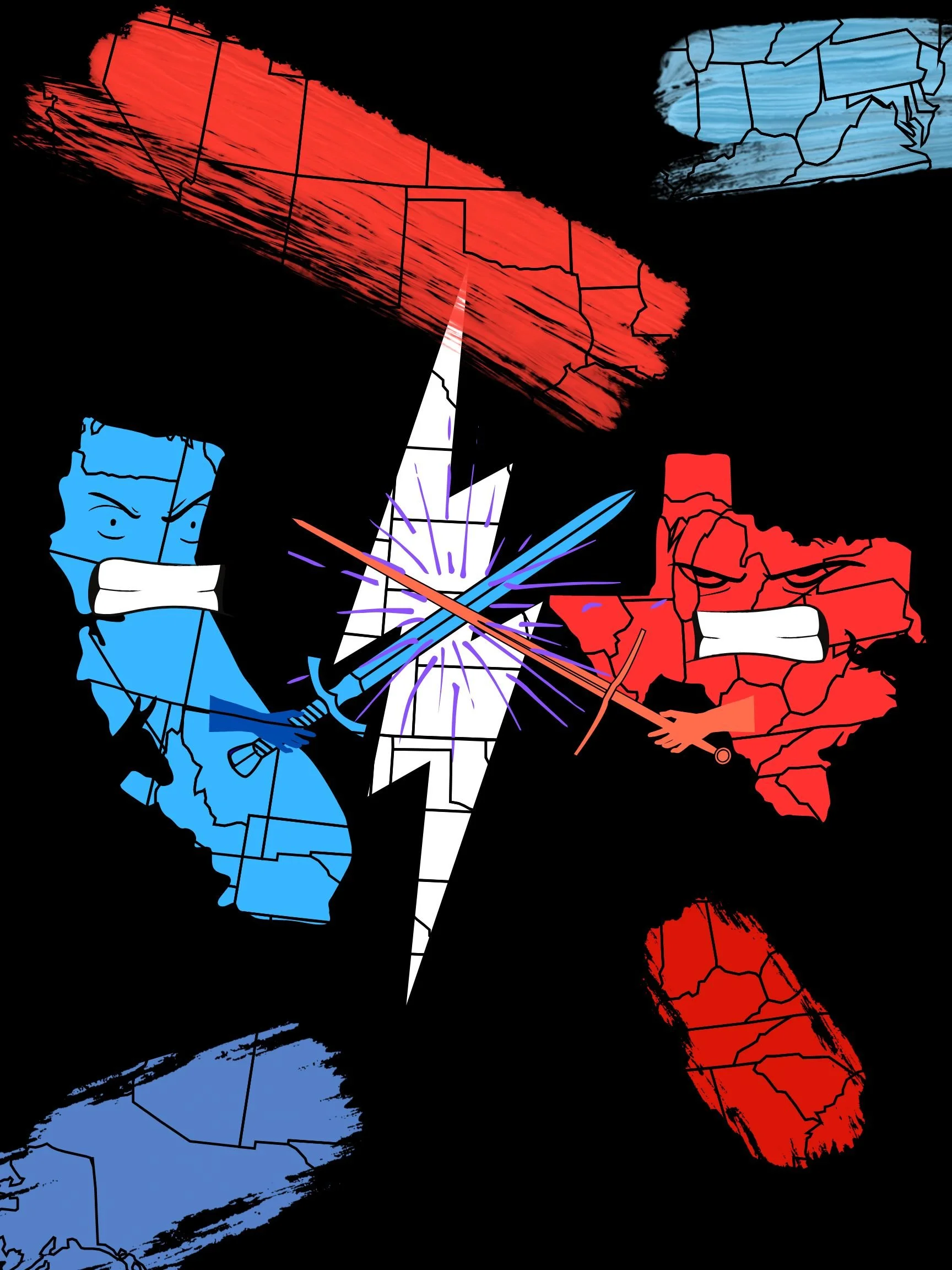One State, Two State, Red State, Blue State
Audrey Smith
California’s Proposition 50 is controversial, to put it lightly. Some argue it goes against every democratic principle that this country was built upon, while others believe it’s a drastic — albeit necessary — solution to a dire problem. But what is Prop 50 really about?
Early into President Trump’s second term, he had the lowest 100-day approval rating in the past 80 years. With midterm elections looming, the Trump Administration has been preparing to try and secure another Republican win. Among efforts to ensure a red majority, Governor Greg Abbott is attempting to redraw Texan congressional districts in order to gain five Republican seats in the House of Representatives. This is referred to as gerrymandering, or redistricting congressional districts (regions with the ability to elect a member for the House) to have a majority of voters for one political party. This is achieved by clumping together smaller sections of heavy metropolitan — often democratic-leaning — areas with large swaths of rural land which tend to lean more Republican.
Many Democratic politicians across the country have admonished Abbott’s behavior, calling it an attack on democracy. Nevertheless, Abbott has disregarded many of these critiques. In response, California Governor Gavin Newsom is choosing a shift in strategy, deciding to fight fire with fire. Newsom has proposed the “Election Rigging Response Act”, or Prop 50 — a similar redistricting proposal. It is gerrymandering, but in favor of Democrats. If his proposal goes through, California will gain six Democratic seats in the House — effectively nullifying Texas’ redistricting. The main difference between the two is that Prop 50 will only go through with the support of California voters, whereas Texas can redistrict without input from Texan voters.
However, Texas and California aren’t the only states to hop onto the gerrymandering bandwagon. Indiana, Missouri and Florida have all voiced an interest in joining Texas, which if all successfully redistricted, would lead to an additional 17 Republican representatives. Similarly, Ohio, Maryland, and New York have all expressed an interest in redistricting, and if successful, could result in 27 additional seats for Democrats.
Currently, it is unclear which way these redistrictings will go. Even if used as a drastic measure, gerrymandering is a slippery slope, already spreading across the country like wildfire. Ideally, none of these states would be redistricting in the interest to boost a political party’s power. But there is little to be done to stop Texas from redistricting, and the subsequent retaliation from California and other states.
Various political scientists have voiced concerns, fearing that this gerrymandering war will only further cement the number of Republican and Democratic seats in the House. Fewer swing seats reduce representatives’ receptiveness, given the threat of losing an election compels them to listen to their voters. When representatives from a political majority feel secure, the incentive to act on behalf of their constituents — while also upholding the Legislative branch’s role in checks and balances — diminishes. If representatives feel they don’t need to listen to the district they represent due to a larger red or blue majority, then the legislative branch cedes power to the Judicial and Executive branches. At best, this war counteracts an overreach of political power, and at worst, leads to the disempowerment of the legislative branch. As citizens and eventual voters of California, it’s crucial to stay up to date on propositions that appear on our ballots — weighing the causes and effects on us as well as our broader communities.
